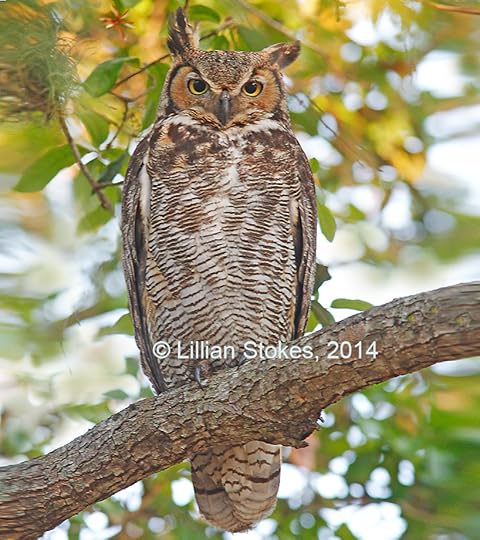Lillian Q. Stokes's Blog, page 2
March 17, 2025
HAPPY ST. PATRICK'S DAY GREEN BIRDS
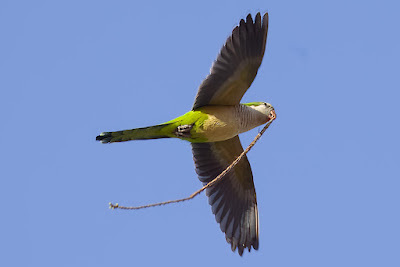 Monk Parakeet
Monk Parakeet
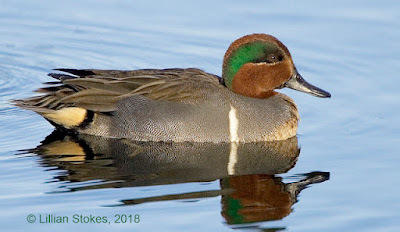 Green-winged Teal
Green-winged Teal
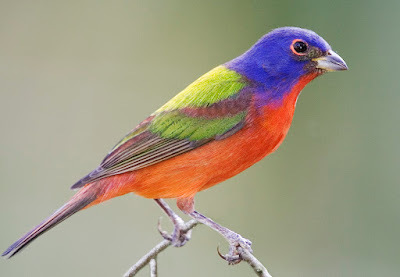 Painted Bunting
Painted Bunting
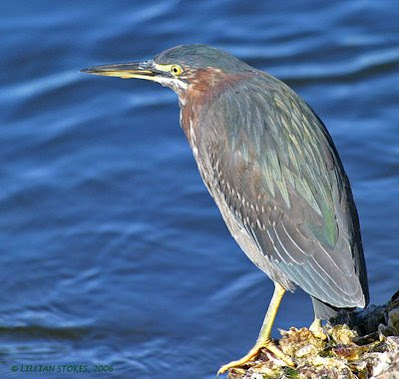 Green Heron
Green HeronHAPPY ST. PATRICK'S DAY green birds. Go through your bird field guide and look for the green birds, then look for where the green occurs and ponder why and why there are not more green birds. Then go have some Irish Coffee.
Published on March 17, 2025 08:04
February 13, 2025
Red-tailed Hawk, subspecies abieticola
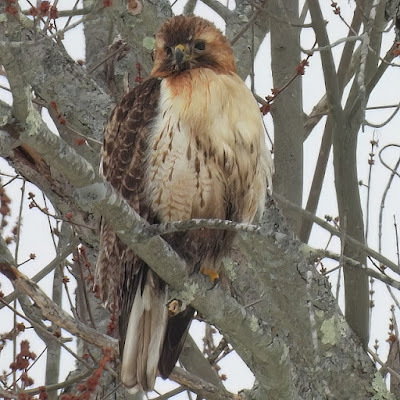 Red-tailed Hawk subspecies abieticola
Red-tailed Hawk subspecies abieticola
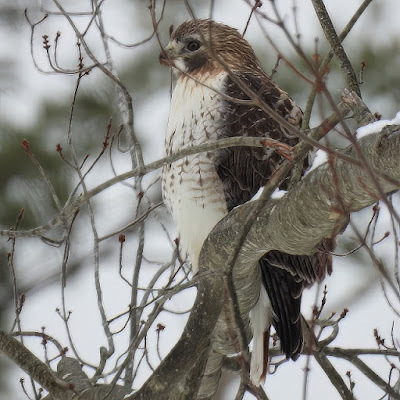 Red-tailed Hawk subspecies borealis
Red-tailed Hawk subspecies borealis
 Map from The Red-tailed Hawk Project
Map from The Red-tailed Hawk ProjectI did the Hawk Migration Association's Winter Raptor Survey yesterday in MA in cold, completely cloudy skies with about 7 In. snow cover. The Red-tailed Hawks were not soaring, but hunted by perching. Look at the fascinating difference in these two Red-tailed Hawks I saw. The colorful one on the left, with a dark throat, buffy wash aross the chest, and much heavier, blobby belly band might possibly be a candidate for the abieticola subspecies (Buteo jamaicensis abieticola). There has been confusion and disagreement about this subspecies with much to learn. W.E. Clyde Todd was the first to describe it in 1950, naming it abieticola "dweller of the firs" since Abies is the genus of true firs and he thought its breeding range was in the Balsam Fir range. Its breeding range is in the boreal zone from Alaska to Atlantic Canada. How cool is that to think this northern visitor has come to spend the winter here. The paler bird on the right looks like our local borealis subspecies who breeds from sw. Alberta east to Maritime Provinces on the southern periphery of the Boreal Forest, and south from cen. Texas east to n. Florida, winters from n. Great Plains, the Great Lakes region and s. New England south to e. Mexico. Red-tailed Hawk subspecies are complicated there are 16 subspecies (according to Birds of the World) in two groups with much regional variation. The wintering range of abieticola is in the U.S. east of the Rocky Mountains and there is much to learn about the wintering and migration habits of this subspecies. You can help by paying more attention to the redtails you see and uploading your photos to eBird. To learn more about this subspecies see this excellent paper by Jerry Liguori and Brian Sullivan. There is also ongoing research on this and other subspecies of redtails by The Red-tailed Hawk Project who consider abieticola to be polymorphic. See here,https://northernredtails.wordpress.com/.../rth...
https://redtailedhawkproject.org/subspecies-guide/
Published on February 13, 2025 14:23
Red-tailed Hawks, interesting visitor, subspecies abieticola
 Red-tailed Hawk subspecies abieticola
Red-tailed Hawk subspecies abieticola
 Red-tailed Hawk subspecies borealis
Red-tailed Hawk subspecies borealis
 Map from The Red-tailed Hawk Project
Map from The Red-tailed Hawk ProjectI did the Hawk Migration Association's Winter Raptor Survey yesterday in MA in cold, completely cloudy skies with about 7 In. snow cover. The Red-tailed Hawks were not soaring, but hunted by perching. Look at the fascinating difference in these two Red-tailed Hawks I saw. The colorful one on the left, with a dark throat, buffy wash aross the chest, and much heavier, blobby belly band might possibly be a candidate for the abieticola subspecies (Buteo jamaicensis abieticola). There has been confusion and disagreement about this subspecies with much to learn. W.E. Clyde Todd was the first to describe it in 1950, naming it abieticola "dweller of the firs" since Abies is the genus of true firs and he thought its breeding range was in the Balsam Fir range. Its breeding range is in the boreal zone from Alaska to Atlantic Canada. How cool is that to think this northern visitor has come to spend the winter here. The paler bird on the right looks like our local borealis subspecies who breeds from sw. Alberta east to Maritime Provinces on the southern periphery of the Boreal Forest, and south from cen. Texas east to n. Florida, winters from n. Great Plains, the Great Lakes region and s. New England south to e. Mexico. Red-tailed Hawk subspecies are complicated there are 16 subspecies (according to Birds of the World) in two groups with much regional variation. The wintering range of abieticola is in the U.S. east of the Rocky Mountains and there is much to learn about the wintering and migration habits of this subspecies. You can help by paying more attention to the redtails you see and uploading your photos to eBird. To learn more about this subspecies see this excellent paper by Jerry Liguori and Brian Sullivan. There is also ongoing research on this and other subspecies of redtails by The Red-tailed Hawk Project who consider abieticola to be ploymorphic.https://northernredtails.wordpress.com/.../rth...There is also ongoing research on this and other subspecies of redtails by The Red-tailed Hawk Project who consider abieticola to be ploymorphic, see here.https://redtailedhawkproject.org/subspecies-guide/
Published on February 13, 2025 14:23
February 10, 2025
No way! After hoping and looking all winter for a Pine Si...
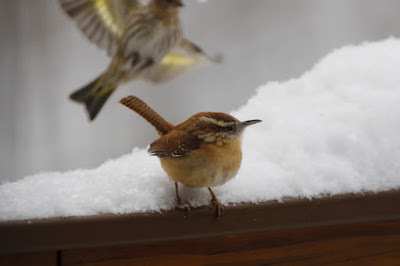

No way! After hoping and looking all winter for a Pine Siskin, one photobombs an image of a Carolina Wren, and I was not aware of it until I downloaded the wren photos!! This was the only time I saw it. Like an apparition from the Finch Superflight of 2020-2021 during which I wrote The Stokes Guide to Finches of the United States and Canada with co-author Matt Young, finches have a way of appearing just when I need them. My quote from the book "Lessons from finches: experiences like this are open to all who trust the improbable is possible. Yes, finches keep calling me, and I keep answering."
Published on February 10, 2025 07:53
December 6, 2024
Stokes Finch Guide one of Best Bird Books 2024, from American Birding Association
 So honored that The Stokes Guide to Finches of the United States and Canada with Matt Young, was just named one of the BEST BIRD BOOKS OF 2024 (the list only includes 5 books) by The American Birding Association!! https://www.aba.org/08-49-birding-book-club-best-of-2024/ Thank you ABA! Matt and I worked extremely hard to bring you a book that goes far beyond a usual field guide. It is the historically first complete guide to finches (including Hawaiian finches). It has 355 stunning photos, some full page, unique, engaging "Quick Take" introductory essays for each main breeding finch, extraordinary foraging charts plus spectrograms for each Red Crossbill call type, "Deep Dive" scientific info, "Fun Facts" and much more. All of this in a beautifully designed, user-friendly, and written for the beginning bird watcher to the most fanatical finch fan format. All things finch for all bird watchers. We hope you enjoy it and it adds to your love and understanding of finches.
So honored that The Stokes Guide to Finches of the United States and Canada with Matt Young, was just named one of the BEST BIRD BOOKS OF 2024 (the list only includes 5 books) by The American Birding Association!! https://www.aba.org/08-49-birding-book-club-best-of-2024/ Thank you ABA! Matt and I worked extremely hard to bring you a book that goes far beyond a usual field guide. It is the historically first complete guide to finches (including Hawaiian finches). It has 355 stunning photos, some full page, unique, engaging "Quick Take" introductory essays for each main breeding finch, extraordinary foraging charts plus spectrograms for each Red Crossbill call type, "Deep Dive" scientific info, "Fun Facts" and much more. All of this in a beautifully designed, user-friendly, and written for the beginning bird watcher to the most fanatical finch fan format. All things finch for all bird watchers. We hope you enjoy it and it adds to your love and understanding of finches.
Published on December 06, 2024 15:07
December 4, 2024
The Perfect Christmas Gift for Bird Lovers!
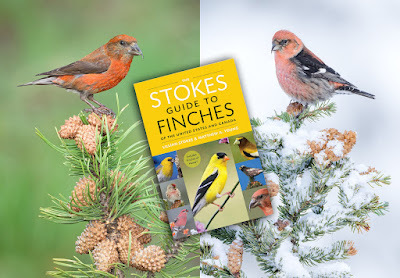
Looking for Christmas Gifts? The new The Stokes Guide to Finches of the United States and Canada with Matt Young is all things finch for all bird lovers, including the 91 million Americans who feed birds (finches are top 10 feeder birds in all areas of the country). Photo by Alan Murphy, whose beautiful photos are in the book. Here is some recent praise:- "Definitely a great book and a first on finches of North America"- "This is an absolutely beautifully written book full of wonderful narrative, exceptionally well researched science, and hundreds of gorgeous photos. MUCH more than a guidebook..."-"For birders that enjoy finches more or less equally to other passerines, or for hard-core finch and irruptive-species fanatics, this book is equally essential reading....the authors have managed to achieve a one-of-a-kind text and one-stop-shop for everything finchy." - "I especially loved the "At Your Feeders" segment - finches are star attendees at my feeder for sure, but having this unique perspective, not offered in other guides surrounding birds, makes me feel like I don't need to go any further than my own back garden in order to really get to know my finchy neighbors. And this just makes me feel good, and as if there's an element of inclusivity for people who are bird-lovers but maybe don't consider themselves birders. As an avid birder myself, who has an extensive library of books, I have never done a cover-to-cover read of any field guide until this one: I just couldn't put down!"
Published on December 04, 2024 14:50
November 7, 2024
White-throated Sparrow Happiness
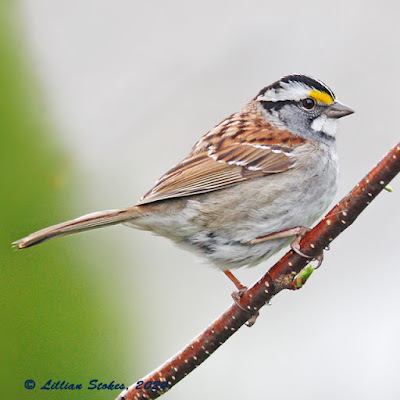
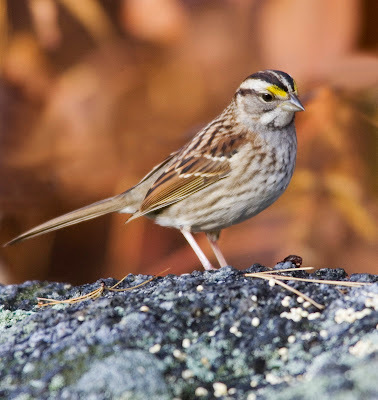
This morning at the feeders my mental health sustaining birds were White-throated Sparrows. They come in two morphs (white-morph and tan morph) with a lot of individual variation. In general, older male white morphs have the brightest, most contrasting plumage and first-year female tan morphs have the least contrasting plumage. White-morphs have white eyebrow and central crown-stripe and more black in lateral crown-stripe. Tan morphs have have buffy eyebrow and central crown-stripe, more brown in lateral crown-stripe. All have white throat patch. Look for this at your feeders. Looking more deeply connects us to birds and provides wellness for us.
Published on November 07, 2024 07:25
November 4, 2024
VOTE!!
Published on November 04, 2024 13:25
October 31, 2024
HAPPY HALLOWEEN!
Published on October 31, 2024 06:26
October 16, 2024
Beautiful Bird Photos! The Stokes Guide to Finches

Gorgeous photo of Pine Grosbeak finch ©AlanMurphyPhotography, from newly published The Stokes Guide to Finches of the United States and Canada. Pine Grosbeaks eat berries, seeds and buds, live in open coniferous forests of the north and west and irrupt southward into northern U.S. when food crops fail. Buy the Book NOW, CLICK HERE
Published on October 16, 2024 08:47
Lillian Q. Stokes's Blog
- Lillian Q. Stokes's profile
- 2 followers
Lillian Q. Stokes isn't a Goodreads Author
(yet),
but they
do have a blog,
so here are some recent posts imported from
their feed.







